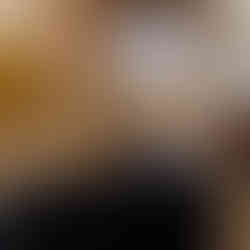Mamiya 6: The World's Most Perfect Camera System?
- Feb 20, 2022
- 6 min read
Updated: Mar 16, 2023
Claimed by some to be the “world’s most perfect camera system”, the Mamiya 6 is a popular but expensive camera. In this blog I’ll explain how and why I bought one, and why I won’t be shooting Bergger Pancro 400 very often.
Why another camera?
Since my return to medium format, I’ve hankered after an interchangeable lens 6x6 rangefinder; especially the “new” Mamiya 6. This shouldn’t be confused with “old” Mamiya Six, a folding camera with fixed lens. The “new” Mamiya 6 is a system camera with a choice of just three different lenses. There are many online reviews saying how wonderful this camera is, and Ken Rockwell says “The Mamiya 6 is the world's most perfect camera system”. Hype like this combined with the growing demand for medium format cameras that aren’t too heavy has pushed up prices. This, in turn, makes them more collectable which pushes up prices even further, to the point where the more recent compact medium format cameras now sell for thousands of pounds, whilst the bigger, heavier RB67 and even the fabulously capable GX680 can be had for under £1,000 with a standard lens and some accessories. But there’s no point in being the richest man in the graveyard and the price rises show no sign of stopping just now, so when The Classic Camera had a Mamiya 6 with all 3 lenses in stock with an advertised six month guarantee on used cameras, I took the (rather expensive) plunge.

Why the Mamiya 6?
It’s reasonably portable and light, with all three lenses it fits in a small bag. I did consider getting a Mamiya 645, my first medium format camera was a 645 1000s back when they were the “latest thing”, but somehow, they didn’t appeal any more, and other medium format SLR cameras are heavier. Of course, the Mamiya 7 is nice and offers a wider choice of lenses, but many of these require an external viewfinder, and the 7 doesn’t have the clever collapsing, space saving lens mount of the 6. And I like square pictures, which is why I didn’t want a 6MF which can also take 6x45 simply by masking off the top and bottom of the picture, and even take panoramic shots on 35mm film. The extra frame lines in the viewfinder make it a little cluttered for my liking, so the basic 6 was the camera for me.
Testing, Testing
I ran a roll of Ilford Delta 400 through the camera to test it at my local seaside town, Tankerton, on the North Kent coast. It was November and there were some interesting guys* outside the shops. I tried all three lenses on the beach. The test roll proved all were working and I was very pleased with the results. A couple of shots showed a tiny light leak on the edge of the film, but not reaching the picture area. As the invoice with the camera said used cameras came with a six month guarantee I decided to try another film before sending it back, but Christmas got in the way and I didn’t use it again until the end of December, on an overcast day in Herne Bay. The light leak was present here too, so the camera needed repair.
* For the benefit of overseas readers, Guido Fawkes tried to blow up our Houses of Parliament in 1605 but was caught, tortured and killed. We joke that he was the only person ever to enter Parliament with honest intentions, and celebrate the occasion with bonfires and fireworks every year on the 5th November. The bonfire is traditionally topped with a “Guy” made of straw or newspaper.
What, No Guarantee?
When I spoke to the dealers about the light leak, they told me the camera only had a one month guarantee “because it was a commission sale” and by then I had owned the camera two months. I was not happy about this – their web site and the invoice sent with the camera both said used cameras came with a six month guarantee and at no point had they indicated this camera didn’t qualify for that. They agreed that I could send the camera to their repairer “as a good will gesture”. I boxed it up and sent it off, and the repairer said the foam pad by the door hinge was faulty, and the door didn’t fit well at the bottom. He repaired it and sent it back, it was only gone about 10 days which is very reasonable, I think. I had to pay postage both ways, which with suitable insurance wasn’t cheap, but the camera and lenses otherwise seem good and I couldn’t be bothered to argue the about it. The Classic Camera certainly sell some lovely medium format cameras but if you consider buying one, ask them in writing whether the advertised six-month guarantee applies to it or not!
Involuntary Vignettes
The proper lens hoods for the wide and standard lenses are quite fragile plastic and cost about £150 from Japan, when you can get them. My outfit came with the hood for the telephoto and standard lenses, but the hood for the wide lens was missing. I bought a cheap metal lens-hood from a well-known auction site, it looked right and even had the cut-out for the viewfinder to see through it, but my test shots showed vignetting at the corners when I used it. So… I had to pay for the “proper” one from Japan. When it came, it wouldn’t stay on the lens because one of the three plastic retaining lugs on the inside of the hood was broken off. To be fair to the seller, it was a tiny piece of damage and if they didn’t have a lens to test it on, they would never have known it wouldn’t stay. They gave me my money back. I ordered another and this time got one that stayed on the lens. Finally, hopefully, I had a full working system and with a couple of second-hand orange filters I was ready to try again.
Let Us Pray
A local church has been on my list of “targets” for some time, and the camera came with a couple of rolls of Bergger Pancro 400 which I’ve not previously tried, so I loaded it and set off on a lovely sunny afternoon with blue sky and fluffy clouds. Needless to say, as soon as I arrived at the church and stepped out of the car, the sky clouded over a uniform grey! I took a few shots of the exterior and then noticed a bicycle by the porch and lights inside. Churches in the UK are usually locked except during services so I was fortunate to find it open. Inside, three gentlemen were cleaning the church and undertaking small maintenance works. When I entered with my camera on its tripod, one of them said “oh, we have a visitor, a professional photographer”. I explained I was just an amateur enthusiast and still shot film and they made me very welcome. They took the plastic dustsheet from the altar, lit the candles for me and asked which lights I wanted on. I finished my roll of film, thanked them and went home to develop it.
Bergger Pancro 400: Trouble Develops
Working out the development time for the film was a challenge. I wanted to use my usual “general purpose” developer, Bellini Hydrofen. Nik & Trick from whom I buy my developer said 1+39 for 6 minutes, but the Massive Dev Chart says it’s 6 minutes at 1+15, at 1+39 it’s 10 minutes 30. I went for 10:30 and the film did look a little over-developed but not by much. Of course, being 400 ISO, the results are grainy, but the claimed benefit of the dual emulsion layers in the is film is very wide dynamic range, and that certainly seems true. English church interiors are very challenging because of the deep shadows in dark, carved oak and the bright light through the stained-glass windows, and the film coped well. The main problem with this film is that it curls into a tight coil once developed and dried. Bergger claim it has an “anti-curl layer” and I can’t help wondering if they have put it on the wrong side! Even after pressing under heavy books for 48 hours, it still coils up in a tight spiral as soon as you take it out, making it hard to scan. For that reason alone, I don’t think I’ll be using it again. I’ll definitely go back to this church with some slower, finer grained film for another attempt, but in the mean time they used some of my images on their web site. Only the square B&W pictures are mine! https://www.achurchnearyou.com/church/19711/
So is it “Perfect”?
I can see why Ken Rockwell claims it is the world’s most perfect camera system. It’s compact, with three fantastic lenses. The viewfinder is bright and clear, the rangefinder patch likewise. The built-in exposure meter is accurate provided you remember it “sees” everything the viewfinder sees, regardless of which lens is fitted. Ergonomically it is excellent, with clear controls that are easy to use and a very light electronic shutter button. But “perfect” depends on what you are doing and of course on your own personal preferences. If I’m shooting an informal gathering of family or friends the auto-focus of the Fuji GA645 is a big help. If I’m shooting still-life, the close focus and accurate composition offered by my Mamiya C330 (with Paramender) make it my weapon of choice. If I’m going out for a walk and want to take a camera, rather than going out to take photographs, the way the Nettar fits in my pocket is a bonus. But the Mamiya 6 is certainly perfect for a lot of the photography I do and I’m sure it will be used a great deal.











Fascinating read! The Mamiya 6 truly is a masterpiece of engineering. If you ever want to document your own experiences with this camera—whether testing lenses or demonstrating its unique features—a https://www.movavi.com/screen-recorder/ can be great for creating detailed walkthroughs. I’ve used one to share rangefinder calibration techniques with other film enthusiasts. What’s your favorite feature of this iconic system?